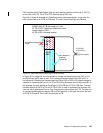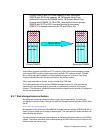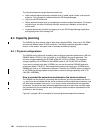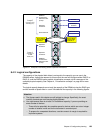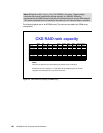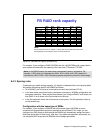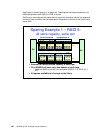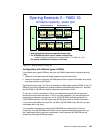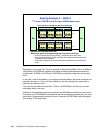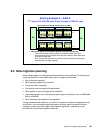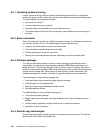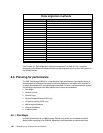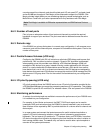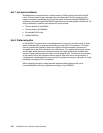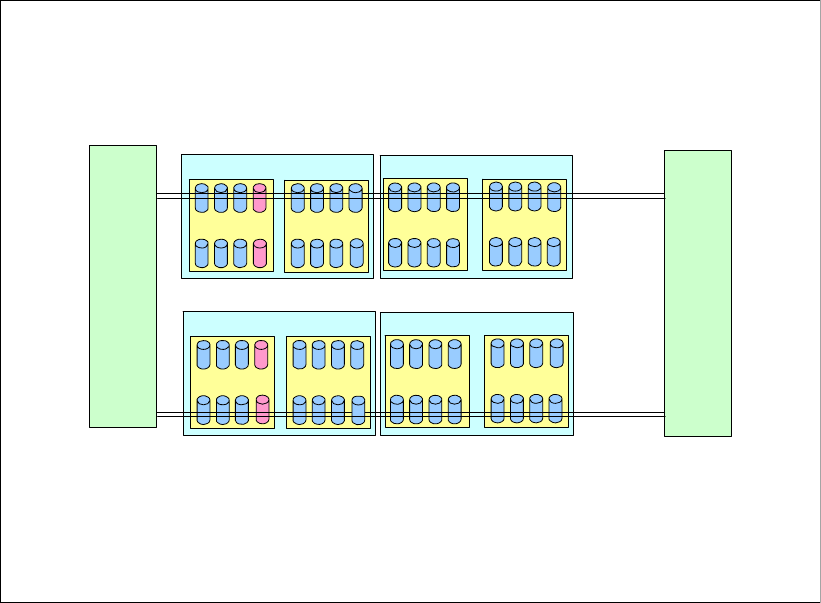
Chapter 8. Configuration planning 143
Figure 8-11 Sparing example 2 (RAID-10)
Configuration with different types of DDMs
If you attach other types of DDMs in the loop, the DS6000 series has the following sparing
rules:
Minimum of two spares per the largest capacity array site on the loop.
Minimum two spares of capacity and RPM greater than or equal to the fastest array site of
any given capacity on the DA pair.
See Figure 8-12 on page 144. This is an example of adding larger capacity DDMs. At first, 32
DDMs of 146 GB are installed in the server enclosure and expansion enclosure 1, and after
that 32 DDMs of 300 GB are installed in expansion enclosures 2 and 3.
In this case, in the first installation of disks, you configure four spare disks in the server
enclosure and expansion enclosure 1. And, in the next installation, you also configure four
spare disks in expansion enclosures 2 and 3. A 300 GB DDM cannot be spared onto a
146 GB DDM; therefore, 300 GB arrays need 300 GB spare disks for RAID configuration.
If you want to add additional arrays with 146 GB or 300 GB DDMs in this DA pair, you don’t
need spare disk in the array.
If the installation sequence is reversed (300 GB DDMs are installed into the first two
enclosures, and 146 GB DDMs are installed into the next two expansion enclosures), you
don’t need spare disks in expansion enclosures 2 and 3 because 146 GB DDM can be
spared onto existing 300 GB spare disks.
Sparing Example 2 – RAID 10:
All same capacity, same rpm
• Assumes all devices same capacity & same rpm
• On a DS6800 will have up to 2 spares on each loop
– Additional RAID arrays will have no spares (RAID 5: 7+P, RAID 10: 4 x 2)
• All spares available to all arrays on the loop
DA
DA
1
3 x 2
4 x 2
2
4 x 2
4 x 2
…
Server Enclosure
1
3 x 2
4 x 2
2
4 x 2
4 x 2
…
Exp Enclosure 1
Exp Enclosure 3
Exp Enclosure 2



